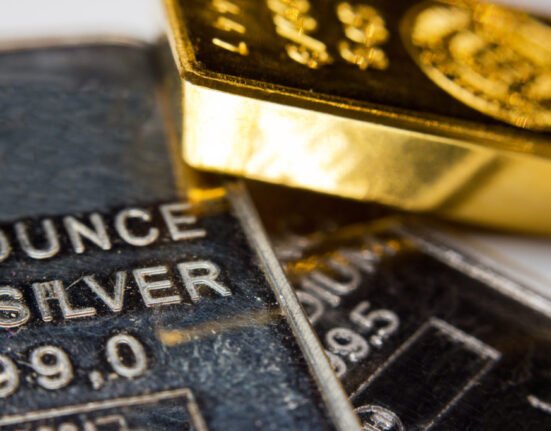Gold prices continued their record-breaking streak, rising Rs 70 to hit Rs 98,170 per 10 grams in the national capital on Thursday, according to the All India Sarafa Association. This comes just a day after the precious metal surged Rs 1,650, touching an all-time high of Rs 98,100, driven by robust global demand.
The recent rally is closely tied to macroeconomic uncertainty, including escalating US-China trade tensions and tariff moves by Donald Trump, which have rattled equity markets and pushed investors toward safer assets like gold.
For investors, gold’s appeal as a hedge against volatility and inflation has only grown. Over the past three years, the yellow metal has delivered an impressive 18% CAGR, supported by rising geopolitical risks, central bank accumulation, and persistent inflationary pressures.
As a result, many are now wondering: Should you pause equity SIPs and shift more capital into gold? Is this rally sustainable, or are we nearing a short-term peak?
While gold remains a strong portfolio diversifier, experts generally caution against overexposure.
“Gold has seen a sharp rise in recent years, delivering a CAGR of 18% over the past three years. This surge is largely attributed to increased global uncertainty, geopolitical tensions, inflationary pressures, and central bank buying. While gold has performed well recently, it’s important to recognize that its returns have historically been inconsistent. Gold often shines during times of uncertainty, acting as a hedge, but may underperform during stable or bullish equity market phases. Therefore, understanding the risk-adjusted return and long-term role of gold in a portfolio is crucial,” said Chethan Shenoy, Executive Director & Head – Product & Research, Anand Rathi Wealth Limited.
“Gold is undoubtedly a valuable asset, and its recent 18% CAGR over the past three years has attracted renewed interest. However, it’s important to view this performance in the context of longer-term returns—over the past 10 years, gold has delivered around 10–11% CAGR. While not as volatile as equities, gold’s role is different: it offers financial stability during global uncertainty. In recent times, rising geopolitical tensions, inflation concerns, and central bank buying have been key reasons for the rally,” said Akhil Rathi, Senior Vice President, Financial Concierge at 1 Finance.
Risk associated with gold and equity
One common metric is the efficiency ratio (Return ÷ Standard Deviation), which tells you how consistently an asset delivers returns. For instance, in the table provided:
Nifty 50 (Equity) had an efficiency ratio of 2.52, suggesting it offered better returns per unit of risk.
Gold had a ratio of 1.98, lower than equity but still solid, particularly during volatile periods.
“A high return isn’t valuable if it comes with high volatility and stress. Risk-adjusted metrics help compare assets on a level playing field — vital for long-term investors,” Shenoy said.
Should you stop your SIPs?
“SIPs in equity mutual funds help build wealth over time by averaging out market ups and downs. Ceasing investments in an asset class that has already experienced a rally, such as gold, could result in unfavourable timing. This move can also reflect short-term thinking—chasing performance rather than following a disciplined strategy. A more balanced approach would be to continue your SIPs and consider gold as a tactical allocation of about 15%–20% of your overall portfolio,” Rathi of 1 Finance said.
Allocation in the portfolio
“When markets are uncertain, gold acts as a hedge but data shows that when markets fall by 10%, gold typically delivers just 3–4%. By using debt instead, investors can earn around 7% during such periods. Given this, it’s wise to diversify beyond gold to reduce risk and enhance returns. For 2025, a balanced portfolio with 80% equity and 20% debt is recommended, as these assets often move in opposite directions, helping stabilize your portfolio. Historically, this mix has delivered returns of around 12%. If you still want exposure to gold, limit it to not more than 10% of your portfolio, and opt for Gold ETFs for cost efficiency and liquidity,” Shenoy added.







